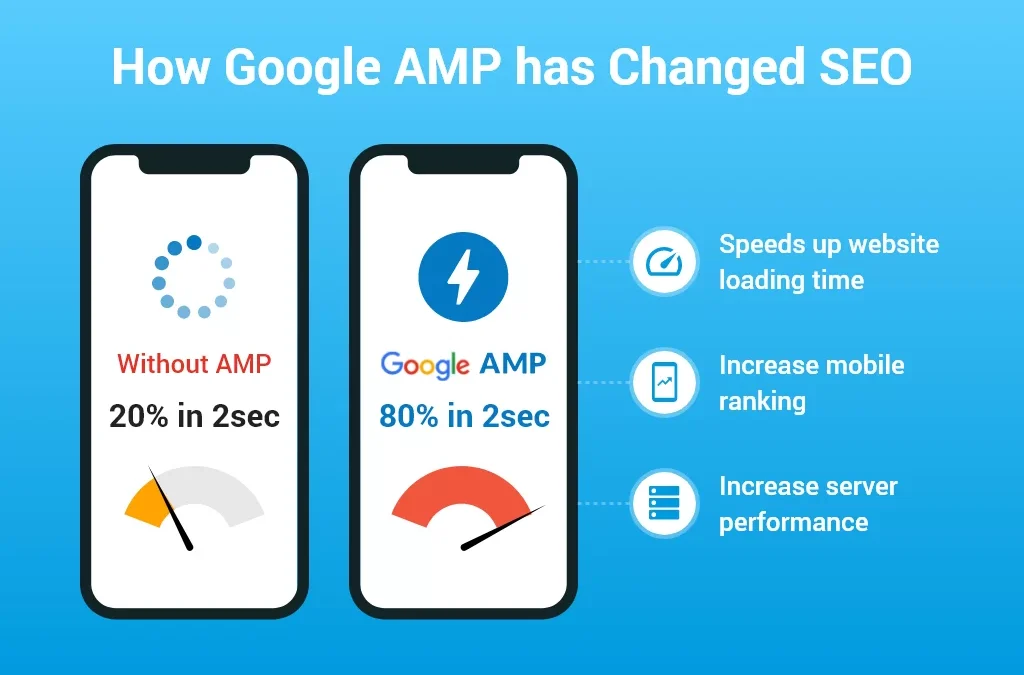Boost Your Website’s Performance and SEO with Accelerated Mobile Pages (AMP)
In today’s fast-paced digital era, mobile devices have become an integral part of our lives. With the majority of internet users accessing websites through their smartphones and tablets, it has become crucial for businesses to optimize their web pages for mobile devices. One technology that has gained significant attention in recent years is Accelerated Mobile Pages (AMP). In this article, we will explore what AMP is, why it is important, and how you can leverage its power to enhance your website’s performance and improve your SEO rankings.
What are Accelerated Mobile Pages (AMP)?
Accelerated Mobile Pages (AMP) is an open-source framework developed by Google in collaboration with various technology and media companies. It is designed to create lightweight and fast-loading mobile web pages. AMP uses stripped-down HTML, streamlined CSS, and a specific JavaScript library to prioritize speed and usability.
Why is AMP Important?
- Improved User Experience: Mobile users have little patience for slow-loading web pages. AMP ensures that your website loads instantly, reducing bounce rates and providing a seamless browsing experience. Users are more likely to engage with your content if it loads quickly and is easy to navigate.
- Increased Mobile Visibility: AMP pages are given priority in mobile search results, increasing your website’s visibility to mobile users. Google displays a lightning bolt icon alongside AMP pages, indicating their accelerated loading speed. This visual cue catches users’ attention and encourages them to click on your link.
- Enhanced Performance: By optimizing your web pages for mobile devices, AMP significantly improves loading times and reduces the amount of data transferred. This is particularly beneficial for users with slower internet connections or limited bandwidth. Faster loading times also contribute to a positive user experience, leading to higher user engagement and increased conversion rates.
- Lower Bounce Rates: Slow-loading pages contribute to higher bounce rates, as users are more likely to abandon a website if it takes too long to load. By implementing AMP, you can minimize bounce rates and encourage users to stay on your website longer. This, in turn, positively impacts your SEO efforts, as search engines interpret longer dwell times as a signal of high-quality content.
How to Implement AMP on Your Website?
Implementing AMP on your website requires a series of steps, as outlined below:
- Identify AMP-friendly Content: Start by identifying the web pages or sections of your website that would benefit from AMP implementation. Typically, content such as articles, blog posts, news updates, and product listings are good candidates for AMP.
- Add the AMP HTML Tag: To create AMP versions of your web pages, you need to add the “amp” attribute to the HTML tag of your existing pages. This attribute indicates that the page is an AMP version.
- Create AMP-compatible Markup: Modify your existing HTML markup to adhere to the guidelines provided by the AMP Project. This involves using specific tags and attributes to ensure compatibility and optimal performance.
- Validate AMP Pages: Use the AMP Validator tool provided by Google to validate your AMP pages. This tool checks for errors and ensures that your pages meet the required standards.
- Implement AMP Cache: To leverage the full benefits of AMP, you can choose to serve your AMP pages through Google AMP Cache or other content delivery networks (CDNs). These caching systems ensure faster content delivery and increased reliability.
- Monitor Performance: Regularly monitor the performance of your AMP pages using tools like Google Analytics. This will help you identify any potential issues and make necessary improvements to optimize your AMP implementation.
The Importance of AMP for SEO:
AMP has a significant impact on SEO for the following reasons:
- Mobile-First Indexing: Google has transitioned to mobile-first indexing, which means it primarily uses the mobile version of a website for indexing and ranking purposes. By implementing AMP, you signal to search engines that your website is mobile-friendly, thus improving your chances of ranking higher in search results.
- Page Speed: Speed is a critical ranking factor for search engines. By delivering lightning-fast loading times, AMP positively influences your website’s ranking. Improved performance reduces bounce rates, increases dwell time, and enhances the overall user experience, all of which are important SEO metrics.
- Featured Snippets: Google often displays featured snippets, which are concise summaries of web pages, at the top of search results. AMP pages have a higher likelihood of being selected as featured snippets due to their speed and mobile optimization. This can significantly increase your organic visibility and drive more traffic to your website.
- Rich Results: AMP pages are eligible for various types of rich results, such as news carousels, top stories, and recipe cards. These visually appealing and interactive search results enhance your website’s visibility and attract more clicks from users.
Conclusion:
Accelerated Mobile Pages (AMP) offer numerous benefits for businesses seeking to improve their website’s performance and enhance their SEO efforts. By prioritizing speed and mobile optimization, AMP delivers an exceptional user experience, reduces bounce rates, and boosts search engine visibility. Implementing AMP requires careful planning and adherence to the AMP guidelines, but the results can be well worth the effort. Embrace AMP and take your website to new heights in the mobile-driven digital landscape.
Call us on 8786 7363 OR email [email protected] for more tips on how to grow your business and stay ahead of the competition! Book a Free 60 minutes consultancy call today here – https://bookmenow.info/businessmarketingagency


